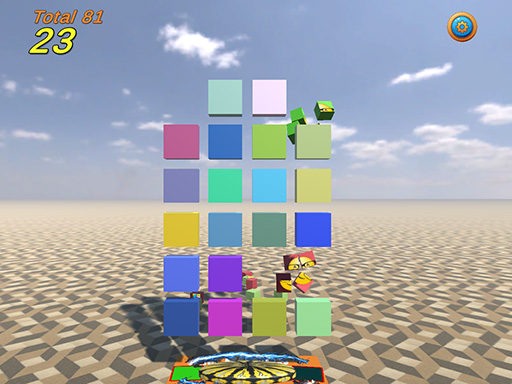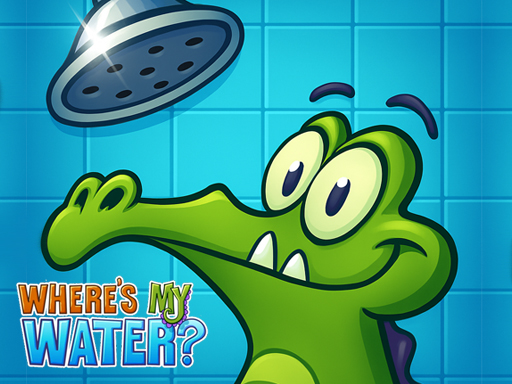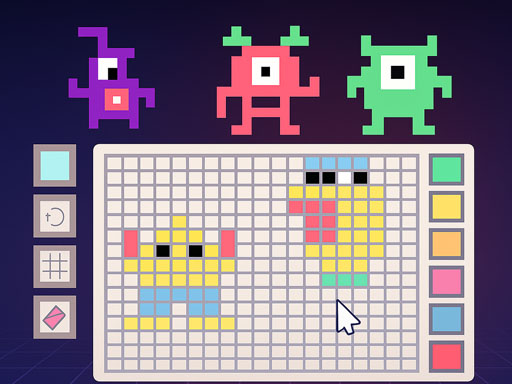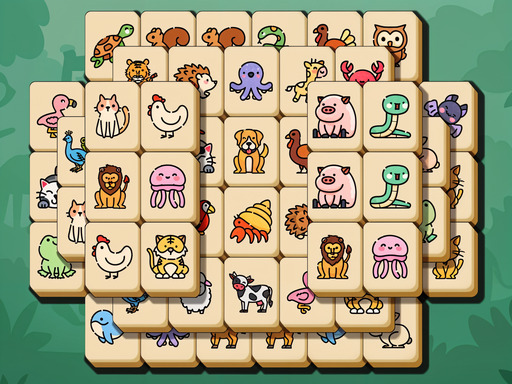HexaFlow Puzzle
About HexaFlow Puzzle
Okay, so I *have* to tell you about this game I stumbled upon. Seriously, you know how sometimes you’re just scrolling, maybe looking for something to kill a few minutes, and then BAM! You hit a game that just… clicks? Like, it resonates with that deep part of your brain that loves a good challenge, but also just wants to chill out and *build* something? That’s exactly what happened to me with HexaFlow Puzzle. I mean, the name itself is pretty straightforward, right? Hexagons, flow… you get the picture. But what it *delivers*? Oh man, it’s just something else.
I’ve always been drawn to games that make you feel smart without making you feel stupid first, if that makes sense. Like, the learning curve is gentle, but the mastery curve? That thing goes straight up into the stratosphere. And HexaFlow Puzzle, it just nails that balance. You start, and honestly, it looks deceptively simple. You’ve got these colorful, geometric blocks at the bottom of the screen, all sorts of shapes, but predominantly these gorgeous, interlocking hexagons. And then, above them, there’s this outlined container, like a blueprint, just waiting to be filled. The whole premise is just what it sounds like: you drag the blocks from your little inventory and place them into that container to assemble a complete shape. Easy, right? That’s what I thought too. And then, you play for five minutes, and suddenly it’s an hour later, and you’re completely lost in it.
There’s something truly magical about the tactile sensation, even on a screen. You pick up a block, and it just feels *right*. The way it hovers, waiting for your decision, the subtle visual feedback as you slide it across the grid. And then, the *snap*. That’s the sound, or rather, the feeling, when a block perfectly slots into place. It’s not just a sound effect; it’s a physical sensation that travels right up your arm, a little jolt of satisfaction that tells you, “Yes. That’s it. That’s where it belongs.” You can almost feel the pieces locking together, forming a coherent whole. And the brilliant thing about this is that it starts so intuitively. You’re just filling in gaps, like a digital jigsaw puzzle, but then the game slowly, almost imperceptibly, starts to introduce layers of complexity.
What I love about games like this is how they evolve. You think you’ve got it figured out, you’re breezing through levels, feeling like a spatial genius, and then HexaFlow just subtly shifts the goalposts. Maybe the container shape becomes more intricate, less obvious. Maybe the blocks you’re given aren't quite what you expect, forcing you to think three steps ahead. You’ll find yourself staring at an empty space, then at the available pieces, and your brain just starts whirring, trying to rotate, flip, and fit them together in your mind before you even drag them. It’s like a silent conversation with the game designer, a constant back-and-forth of challenge and triumph.
The real magic happens when you hit a level that genuinely stumps you. And trust me, you *will* hit them. You’ll try one configuration, then another, then a third, and nothing seems to work. You might even feel that little spark of frustration, that familiar gaming annoyance that makes you want to throw your phone across the room. But here’s the thing: with HexaFlow, that frustration never feels unfair. It always feels like *your* brain just hasn’t quite connected the dots yet. It’s never the game being cheap; it’s always an invitation to look at the problem from a different angle. And when that moment of clarity hits, when you suddenly see the solution, that one piece that unlocks everything else… oh man, that’s the good stuff. That’s the rush. It’s not an adrenaline spike like a perfect drift around a corner in a racing game, but it’s a deep, resonant satisfaction, a quiet victory that settles in your bones.
And the levels, they really are exquisite. It’s not just about getting harder; it’s about introducing new ideas. One level might have a huge, sprawling container that feels like you’re building a miniature city out of hexagons. Another might be incredibly compact, forcing precision and an almost surgical approach to placement. You start to see patterns, develop strategies. Sometimes you fill from the outside in, sometimes from the inside out. You learn to identify key pieces, those critical blocks that have to go in a specific spot to make everything else fit. It’s a masterclass in elegant puzzle design. The visual aesthetic is clean, calming, almost minimalist, which just lets your brain focus entirely on the task at hand. There are no flashy distractions, no unnecessary clutter. Just you, the blocks, and the puzzle.
Honestly, I’ve lost entire evenings to this game. I’ll sit down, thinking I’ll just knock out a couple of levels before bed, and the next thing I know, the birds are chirping outside and I’m still chasing that feeling of completing just *one more* perfect puzzle. It’s that perfect blend of meditative flow and intellectual stimulation. It’s not loud, it’s not flashy, but it’s incredibly deep. It taps into that primal human urge to create order out of chaos, to fit disparate parts into a harmonious whole. And the sense of accomplishment you get when that final block snaps into place, and the entire container lights up, signaling your success? It’s genuinely addictive.
In my experience, the best moments come when you stop *trying* to solve it and just let your intuition take over. You’re not consciously thinking, "Okay, this block needs to rotate 60 degrees and then slide here." You’re just *seeing* it. Your fingers move almost on their own, guided by some deeper understanding that has formed through hours of play. It’s like learning a new language, where at first you’re translating every word, but eventually, you’re just *thinking* in it. HexaFlow gets you to that point with spatial reasoning. You become fluent in the language of hexagons.
What’s fascinating is how much variety they manage to squeeze out of such a simple premise. You’d think dragging and dropping blocks would get repetitive, but because the level designs are so thoughtful, so varied, it always feels fresh. Just wait until you encounter some of the later levels, where the shapes you need to fill are truly mind-bending, or where the available blocks seem utterly unsuited to the task, forcing you to completely rethink your approach. The developers clearly put a lot of love and thought into crafting each challenge. It’s not just a random generation; each level feels like a handcrafted piece of art, a miniature puzzle box designed to delight and challenge.
This makes me wonder about the kind of person who designs these levels. Do they just sit there, moving virtual hexagons around for hours, finding that perfect balance of difficulty and elegance? It’s a testament to their skill that the game never feels unfair, even when it’s incredibly hard. It always feels like a solvable mystery, just waiting for your moment of insight. And that, for me, is the hallmark of a truly great puzzle game. It respects your intelligence, it rewards your patience, and it leaves you feeling genuinely satisfied, not just with the solution, but with the journey to get there.
So yeah, if you’re looking for something that will genuinely grab your attention, something that will make you forget about the outside world for a while, and something that will give your brain a really satisfying workout, you seriously need to check out HexaFlow Puzzle. It’s more than just dragging blocks; it’s an experience. It’s that quiet joy of creation, that spark of understanding, that deep satisfaction of bringing order to chaos. Trust me on this one. You won’t regret it.
I’ve always been drawn to games that make you feel smart without making you feel stupid first, if that makes sense. Like, the learning curve is gentle, but the mastery curve? That thing goes straight up into the stratosphere. And HexaFlow Puzzle, it just nails that balance. You start, and honestly, it looks deceptively simple. You’ve got these colorful, geometric blocks at the bottom of the screen, all sorts of shapes, but predominantly these gorgeous, interlocking hexagons. And then, above them, there’s this outlined container, like a blueprint, just waiting to be filled. The whole premise is just what it sounds like: you drag the blocks from your little inventory and place them into that container to assemble a complete shape. Easy, right? That’s what I thought too. And then, you play for five minutes, and suddenly it’s an hour later, and you’re completely lost in it.
There’s something truly magical about the tactile sensation, even on a screen. You pick up a block, and it just feels *right*. The way it hovers, waiting for your decision, the subtle visual feedback as you slide it across the grid. And then, the *snap*. That’s the sound, or rather, the feeling, when a block perfectly slots into place. It’s not just a sound effect; it’s a physical sensation that travels right up your arm, a little jolt of satisfaction that tells you, “Yes. That’s it. That’s where it belongs.” You can almost feel the pieces locking together, forming a coherent whole. And the brilliant thing about this is that it starts so intuitively. You’re just filling in gaps, like a digital jigsaw puzzle, but then the game slowly, almost imperceptibly, starts to introduce layers of complexity.
What I love about games like this is how they evolve. You think you’ve got it figured out, you’re breezing through levels, feeling like a spatial genius, and then HexaFlow just subtly shifts the goalposts. Maybe the container shape becomes more intricate, less obvious. Maybe the blocks you’re given aren't quite what you expect, forcing you to think three steps ahead. You’ll find yourself staring at an empty space, then at the available pieces, and your brain just starts whirring, trying to rotate, flip, and fit them together in your mind before you even drag them. It’s like a silent conversation with the game designer, a constant back-and-forth of challenge and triumph.
The real magic happens when you hit a level that genuinely stumps you. And trust me, you *will* hit them. You’ll try one configuration, then another, then a third, and nothing seems to work. You might even feel that little spark of frustration, that familiar gaming annoyance that makes you want to throw your phone across the room. But here’s the thing: with HexaFlow, that frustration never feels unfair. It always feels like *your* brain just hasn’t quite connected the dots yet. It’s never the game being cheap; it’s always an invitation to look at the problem from a different angle. And when that moment of clarity hits, when you suddenly see the solution, that one piece that unlocks everything else… oh man, that’s the good stuff. That’s the rush. It’s not an adrenaline spike like a perfect drift around a corner in a racing game, but it’s a deep, resonant satisfaction, a quiet victory that settles in your bones.
And the levels, they really are exquisite. It’s not just about getting harder; it’s about introducing new ideas. One level might have a huge, sprawling container that feels like you’re building a miniature city out of hexagons. Another might be incredibly compact, forcing precision and an almost surgical approach to placement. You start to see patterns, develop strategies. Sometimes you fill from the outside in, sometimes from the inside out. You learn to identify key pieces, those critical blocks that have to go in a specific spot to make everything else fit. It’s a masterclass in elegant puzzle design. The visual aesthetic is clean, calming, almost minimalist, which just lets your brain focus entirely on the task at hand. There are no flashy distractions, no unnecessary clutter. Just you, the blocks, and the puzzle.
Honestly, I’ve lost entire evenings to this game. I’ll sit down, thinking I’ll just knock out a couple of levels before bed, and the next thing I know, the birds are chirping outside and I’m still chasing that feeling of completing just *one more* perfect puzzle. It’s that perfect blend of meditative flow and intellectual stimulation. It’s not loud, it’s not flashy, but it’s incredibly deep. It taps into that primal human urge to create order out of chaos, to fit disparate parts into a harmonious whole. And the sense of accomplishment you get when that final block snaps into place, and the entire container lights up, signaling your success? It’s genuinely addictive.
In my experience, the best moments come when you stop *trying* to solve it and just let your intuition take over. You’re not consciously thinking, "Okay, this block needs to rotate 60 degrees and then slide here." You’re just *seeing* it. Your fingers move almost on their own, guided by some deeper understanding that has formed through hours of play. It’s like learning a new language, where at first you’re translating every word, but eventually, you’re just *thinking* in it. HexaFlow gets you to that point with spatial reasoning. You become fluent in the language of hexagons.
What’s fascinating is how much variety they manage to squeeze out of such a simple premise. You’d think dragging and dropping blocks would get repetitive, but because the level designs are so thoughtful, so varied, it always feels fresh. Just wait until you encounter some of the later levels, where the shapes you need to fill are truly mind-bending, or where the available blocks seem utterly unsuited to the task, forcing you to completely rethink your approach. The developers clearly put a lot of love and thought into crafting each challenge. It’s not just a random generation; each level feels like a handcrafted piece of art, a miniature puzzle box designed to delight and challenge.
This makes me wonder about the kind of person who designs these levels. Do they just sit there, moving virtual hexagons around for hours, finding that perfect balance of difficulty and elegance? It’s a testament to their skill that the game never feels unfair, even when it’s incredibly hard. It always feels like a solvable mystery, just waiting for your moment of insight. And that, for me, is the hallmark of a truly great puzzle game. It respects your intelligence, it rewards your patience, and it leaves you feeling genuinely satisfied, not just with the solution, but with the journey to get there.
So yeah, if you’re looking for something that will genuinely grab your attention, something that will make you forget about the outside world for a while, and something that will give your brain a really satisfying workout, you seriously need to check out HexaFlow Puzzle. It’s more than just dragging blocks; it’s an experience. It’s that quiet joy of creation, that spark of understanding, that deep satisfaction of bringing order to chaos. Trust me on this one. You won’t regret it.
Enjoy playing HexaFlow Puzzle online for free on Midiablog games. This Puzzle game offers amazing gameplay and stunning graphics. No downloads required, play directly in your browser!
How to Play
Mouse click or tap to play





Comments
This game is awesome! I love the graphics and gameplay.
One of the best games I've played recently. Highly recommended!